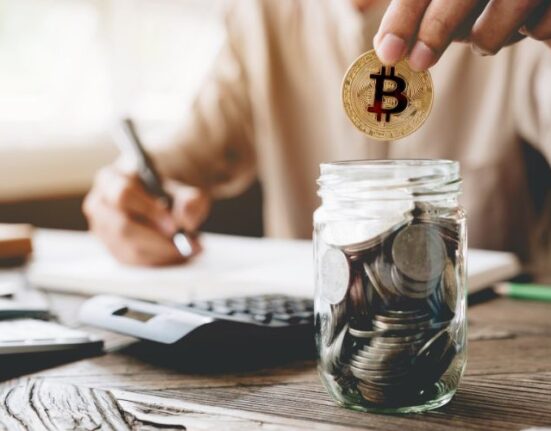In recent times, Initial Coin Offerings (ICOs) have become a popular way of raising funds within the crypto ecosystem. Small startups with fully formed teams can convince the public to invest in their projects by buying their tokens, which act as shares.
In the past six years, there have been more than 1,500 ICOs within the cryptocurrency space, and more than $100 million has been raised in the first month of 2019. Due to the hype presented by this form of crowdfunding, many people are unaware of other methods of raising money for blockchain projects. One such method is the Initial Exchange Offering (IEO).
IEOs are a lot less popular than other crowdfunding methods but have a lot of advantages. In the case of an ICO, investor members exchange Ether (ETH), for the coin being offered. The Ether is sent to the smart contract of the development team and is used to develop the product, as pitched to investors. The responsibility of ensuring that everything goes as planned lies solely on the team behind the product. Initial Exchange Offerings, on the other hand, leave such obligations to the exchange where they are hosted.
WHAT IS AN IEO?
An Initial Exchange Offering is a fundraising event that a cryptocurrency exchange facilitates on behalf of a token issuer. Usually, an issuer is a new project or investment venture that is offering a new cryptocurrency as an asset class, to raise capital for development.
To set up an offering, the issuer typically pays a listing fee as well as a certain percentage of the tokens sold during the IEO, which goes directly to the exchange. After payment, the exchange is expected to sell the new cryptocurrency offered by the issuer, as well as list it, even after the offering. Since exchanges stand to gain something from the arrangement, they usually play an active role in marketing the token to prospective investors.
Unlike ICOs, where investors send Ether to the developer’s smart contract, IEO investors are required to register and verify their profiles on the host exchange, then transfer their funds to their new accounts. They are also required to continue purchasing coins directly from the platform.
Usually, the arrangement between the token issuer and the exchange may depend on several variables, including:
- The predetermined token sales cap per investor
- A fixed asset price for the new cryptocurrency
- The hard cap and soft cap
- The percentage of tokens sold (ratio of sold vs. available)
- A predetermined amount of funds for the exchange platform
- Marketing costs of distribution and coverage
WHY CHOOSE AN IEO OVER AN ICO?
The blockchain scene is saturated with ICOs. On the surface, it seems like a successful way to raise funds, but developers cannot ignore the apparent problems with the model. There is a lack of trust on the part of investors as a result of ICO scams, fraud and money laundering.
Without the trust of investors, the chances of raising enough funds through this crowdfunding method reduce significantly. So how can Initial Exchange Offerings solve these problems for blockchain project teams? Simple:
- Most projects are new, and this means that they do not have a vast network of users yet. As a result, it is more difficult for them to appear credible enough to win the trust of investors. IEOs allow these projects to tap into the user base of the exchanges involved.
- IEOs prevent gas wars in which users boost the speed of their transactions by paying more gas (the transaction cryptocurrency, often Ether). Since the exchange handles all transactions, single speeds are uniform on their end.
- When a project lists its cryptocurrency on an exchange during an offering, it means that investors can buy it only in those exchanges. This makes it harder for them to become victims of online buying and phishing scams.
- IEOs act as a vote of confidence from the exchange to the project, and this boosts its credibility.
- After the IEO, the project is automatically listed on the exchange without further stress on the part of the issuer.
DISADVANTAGES
- IEOs are not free, and token issuers pay listing fees that can cost hundreds of thousands of dollars. Some exchanges may even demand up to 10% of funds raised, as a part of the listing fee.
- The use of an exchange places a geographical limitation on investors since most exchanges only cater to specific countries.
- Issuers have to bear the cost of marketing themselves even if it will bring the exchange some exposure as well. These marketing costs can often run into hundreds of thousands of dollars as well.
HOW TO PARTICIPATE IN AN IEO
Participating in an Initial Exchange Offering is a safe and easy process depending on the digital currency exchange involved. It is also a lot less complicated than participating in an Initial Coin Offering and can be done in the following easy steps.
- First, investors must check if an IEO will be issued for the project that they are looking to invest in. For most blockchain-related projects and startups, Initial Coin Offerings are the most common way to source for funds. So, it is important to ensure that the project is truly conducting an Initial Exchange Offering, to avoid being misled, especially in the case of new investors.
- Next, anyone looking to participate in an Initial Exchange Offering must find out about its specific details. This includes knowing when and which exchanges it will take place on. Usually, IEOs can happen on several exchanges at once, but in a lot of cases, it is restricted to just one. This step is essential for two main reasons. Firstly, not every exchange is secure. Some of them have controversial security measures in place, and it is generally riskier to deal with the lesser-known platforms. Secondly, exchanges usually have verification processes that can range from hours to weeks, so investors must sign up early and be prepared.
- After researching the exchanges involved, including security details, reliability, and verification process, it’s time to sign up. Cryptocurrency exchanges usually require information such as a name, email address, and password. In some cases, further details such as a country, along with supporting documents such as photographs, government-issued identification, and proof of residency are required as well.
- Usually, Ether is the medium of exchange in both Initial Coin Offerings and Initial Exchange Offerings. Since most newly launched projects are composed of decentralized applications built on the Ethereum blockchain, most transactions occur in Ether. However, in some cases, a different cryptocurrency such as EOS or TRON is required. It is essential to find out the primary currency for the IEO and buy some of it.
- After buying the transaction currency, investors should wait for the IEO to begin. From that point, all that’s left is to buy the issuer’s token on the exchange, just like any other token would be purchased.
FINAL THOUGHTS
Although Initial Coin Offerings remain a great way to crowdsource for funds from the public, the model is beginning to exhaust itself. With IEOs, it is easy to check for credibility. In the case of ICOs, it’s mostly down to blind luck due to regulatory uncertainty, past ICO scams, the unreliability of development teams, leading to non-fulfillment of promises, fraud, money laundering, the bankruptcy of many projects, and the lack of proper security. Hopefully, IEOs will rise out of the ICO frenzy, as a better way to raise funds.

















